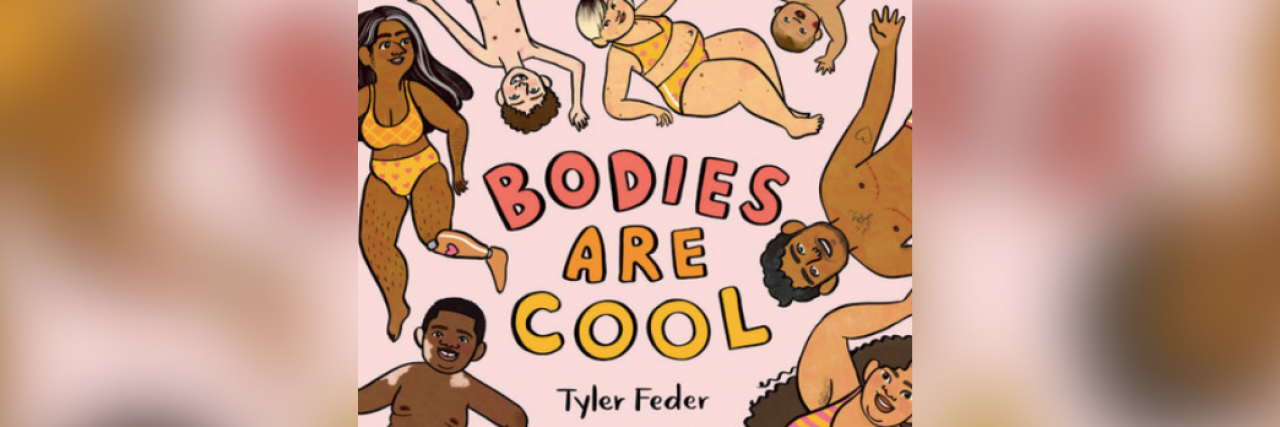New Children's Book 'Bodies Are Cool' Normalizes Bodies of All Shapes and Sizes
Editor's Note
We hope the products below help you or a loved one in your health journeys. Just so you know, The Mighty may collect a share of sales from the affiliate links on this page. As an Amazon associate, we earn from qualifying purchases.
Working at a public library, I encounter a lot of books. And I know you shouldn’t judge a book by its cover, but I do see a lot of covers as I’m shelving. I can’t help but judge them. One picture book that instantly caught my eye was “Bodies Are Cool,” by Tyler Feder.
Published in 2021, this book takes body positivity to a whole new level. The cover alone features various bodies, of different sizes, different skin colors, having scars or stretch marks, using a hearing aid or insulin pump, and covered in various amounts of hair. The book shows even more different bodies throughout. Pages focus on height, eyes, tummies, scars, and more, all while proclaiming that “All bodies are good bodies! Bodies are cool!”
One page in particular features skin differences. The text reads, “Freckled bodies, dotted bodies, rosy-patched or speckled bodies, dark-skin-swirled-with-light-skin bodies. Bodies are cool!” while each person illustrated also enjoys speckled or swirled ice cream. Not only are the illustrations bright and fun, but they show skin differences rarely seen in illustrations, if ever before. Even beyond this page, several illustrations feature spotted, vitiligo-like skin. This is skin that looks more like mine.
When I was diagnosed with vitiligo as a child, my mom was handed a pamphlet of clinical information from the dermatologist and sent on her way. She later told me that this was terrifying, so she looked elsewhere for personal stories. She found news anchor, Lee Thomas’s, memoir, but I was too young to be interested in that type of book. We did find a picture book, “Different Just Like Me,” which was about differences among children, but despite it being inspired by vitiligo, the illustrations did not ever show vitiligo. Representation of skin and other visual body differences was improving, but certainly still lacking.
This is why books like “Bodies Are Cool” are such a huge step forward. It has representation that’s just existing, rather than making it so heavily a difference. It presents diverse bodies as the natural state of being, which is how bodies are in the real world and how it should be in literature, especially children’s literature. For me, seeing vitiligo in a picture book is stunning. This book is a radical form of acceptance of all bodies. Everyone, of all ages, will hopefully find themselves represented somewhere.
One of my other favorite pages shows a group of people at a dance class. The text reads, “Round bodies, muscled bodies, curvy curves and straight bodies, jiggly-wiggly fat bodies. Bodies are cool!” Most of the people in the illustration break the mold of a “traditional” ballet dancer somehow, whether that is being in a larger body, being male presenting, using a prosthetic leg, having messy hair, or having no hair. I have danced my whole life and recently experienced weight gain, which made me feel less comfortable going to a ballet class. Yet, here is a page in a picture book showing me all bodies can do ballet, and all bodies are cool.
I’m not surprised that here in Illinois, “Bodies Are Cool” is among the nominees for the 2023 Monarch Award, voted on by readers K-3. If I was eligible to vote, I would choose this book in an instant. We must keep writing and illustrating diverse bodies, until books like this are the norm. In the meantime, “Bodies Are Cool” should be in every library, every classroom, and every home.
Image via Tyler Feder’s Instagram

